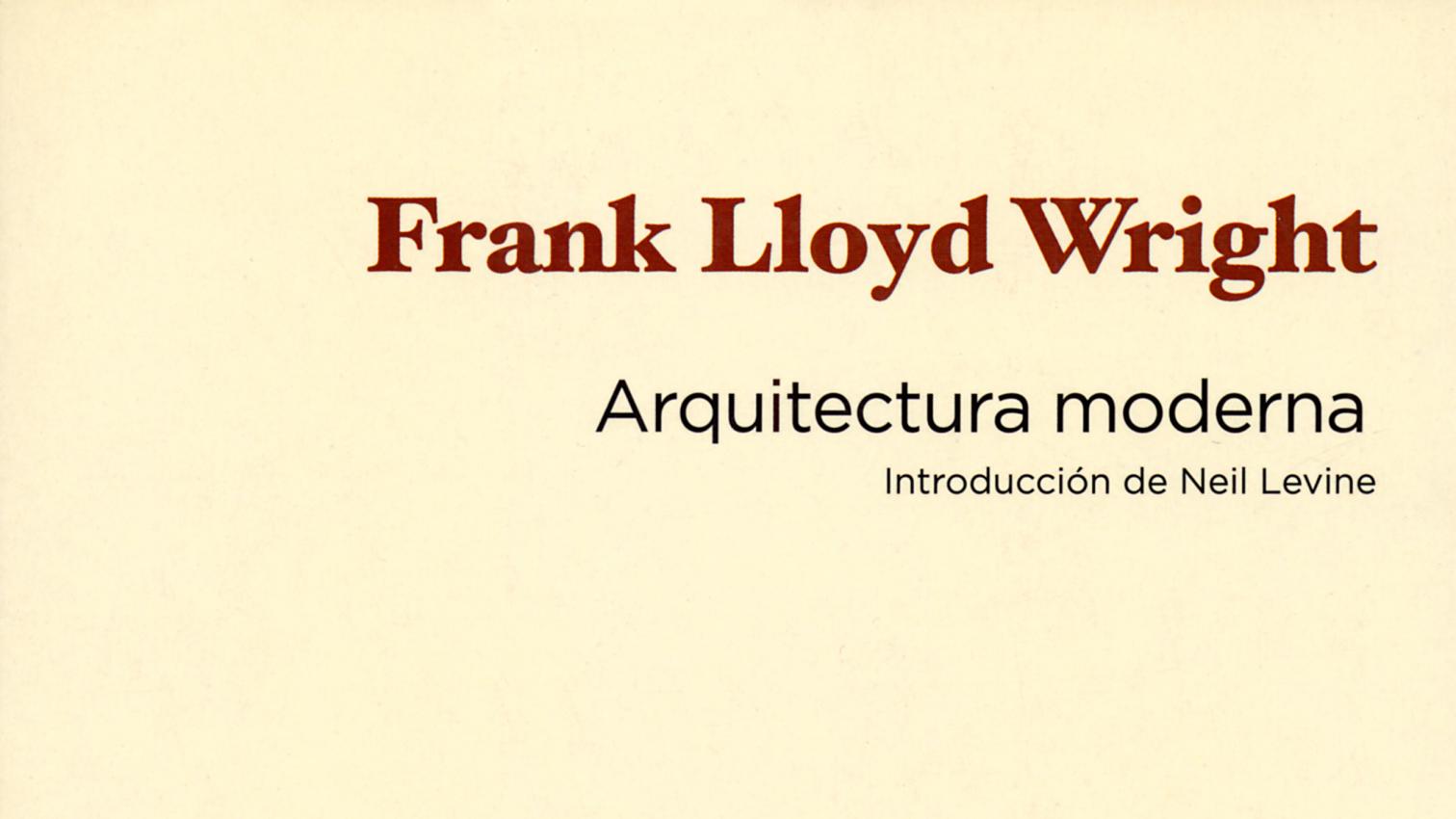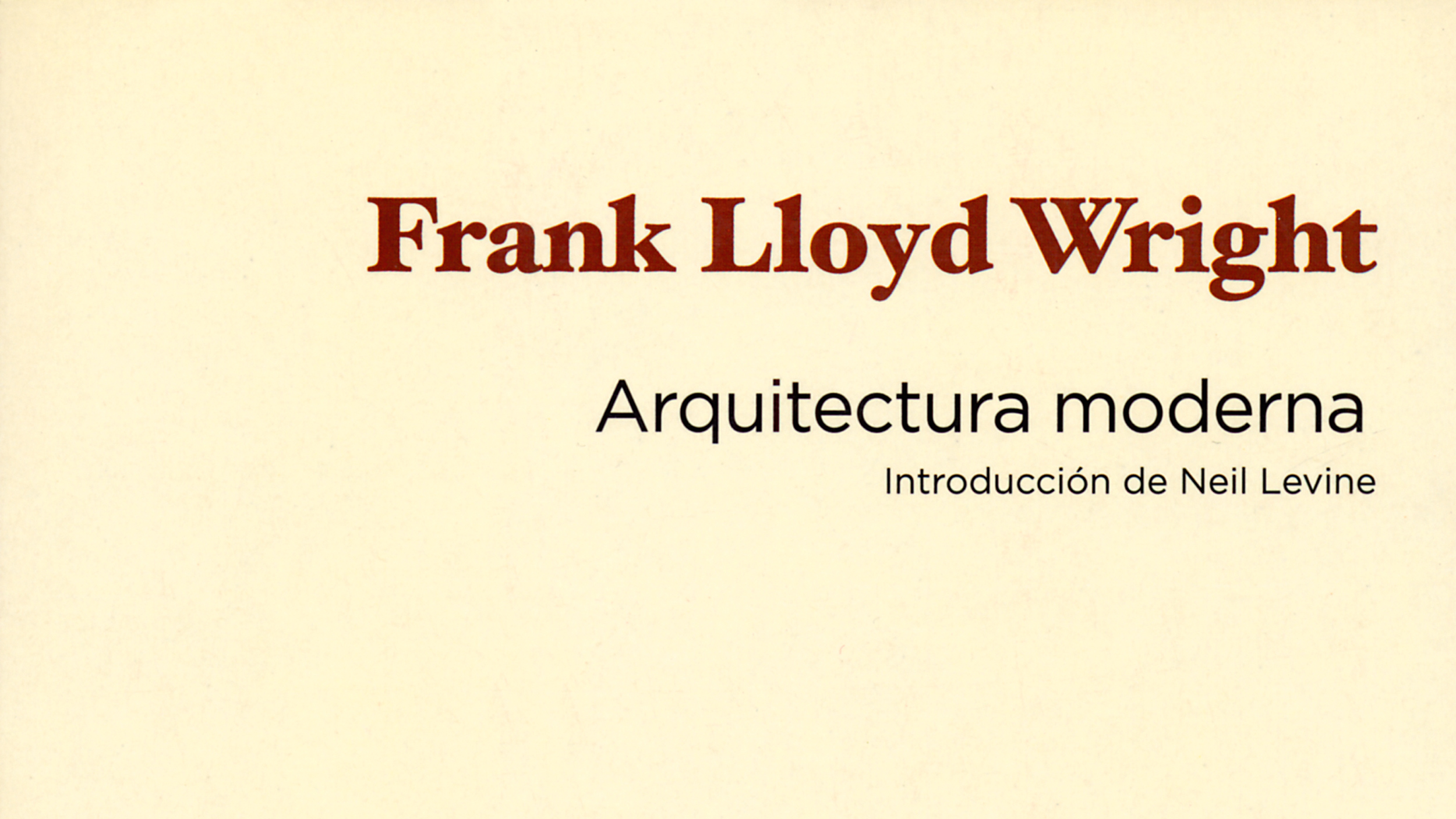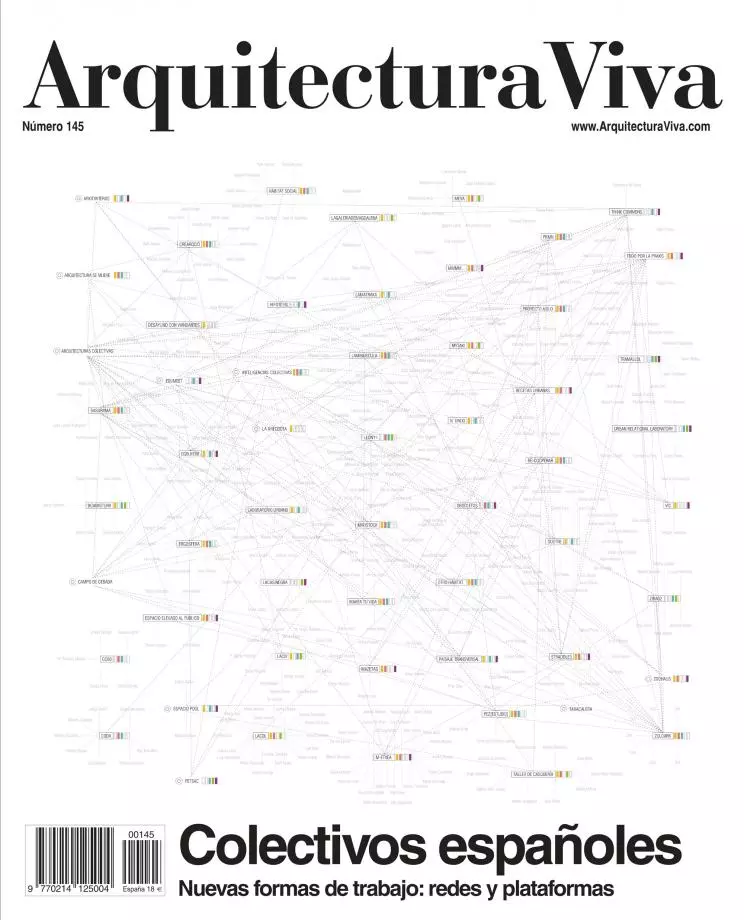
"I went to Princeton to preach." In May 1930, when he delivered the Kahn Lectures at Princeton, Frank Lloyd Wright was going to be 63 years old; by then, he had already entered history: just for the works built up to 1910 (when he left his family and fled to Europe with a client's wife), he could already have been considered an extraordinary architect.
The six lectures delivered by Wright were published in 1931 by the University Press; and in 1953 they were included in his book The Future of Architecture. Thus, the ideas expounded by Wright had already existed in Spanish for a long time. So what is the reason for reprinting them in 2010? Probably because Princeton republished the booklet of the lectures in 2008, this time with a splendid introduction by Neil Levine. Therefore, what is new in this edition is that introduction and the original 1931 preface, as well as a new translation that greatly improves the Argentine version.
I encourage readers to approach this introduction with curiosity, overcoming the initial discouragement provoked by the numerous notes (190 in 66 pages); for what at first sight might seem pure erudite incontinence is in fact an enjoyable and rigorous text that explains in detail the gestation, development and content of Frank Lloyd Wright's performance at Princeton.
One might even say that the introduction makes it easier to read Wright's texts, who was more given to emotional preaching than analytical description. As Neil Levine himself points out, "Wright was more eloquent, more convincing and even more poetic in his buildings than in his words. Likewise, he was far more original and creative in his architectural projects than in his theoretical writings."
And what ideas did Wright preach to the Princeton students? Well, some he already knew and others he had in the works. The first lecture included a variant of his famous talk 'Arts and Crafts of the Machine' (1903), with which Wright claimed his role as a 'pioneer' in the shift from the handcrafted workmanship advocated by the English Arts & Crafts movement, to the machine production advocated by the Central European Modern Movement.
In the last lecture, 'The City', Wright sketches that urban conception that he would later capture in his book The Disappearing City (1932): a dispersed city, with one-acre family plots and with public buildings concentrated around singular points such as gas stations. Wright christened this city Broadacre City and built a large model that was exhibited throughout the country in the years that followed.
In 1930, when he delivered the Princeton Lectures, many thought Wright was on the verge of retirement. But shortly thereafter he would meet two decisive people: Edgar J. Kaufmann and Herbert F. Johnson Jr. For the former he would build the most famous house in the history of architecture: Fallingwater, the 'house of the waterfall'. For the latter, he would build one of the most suggestive interior spaces of the 20th century: the Johnson Wax Company offices. And there was still his masterful posthumous work: the Guggenheim Museum in New York, completed 30 years after the Princeton lectures.







